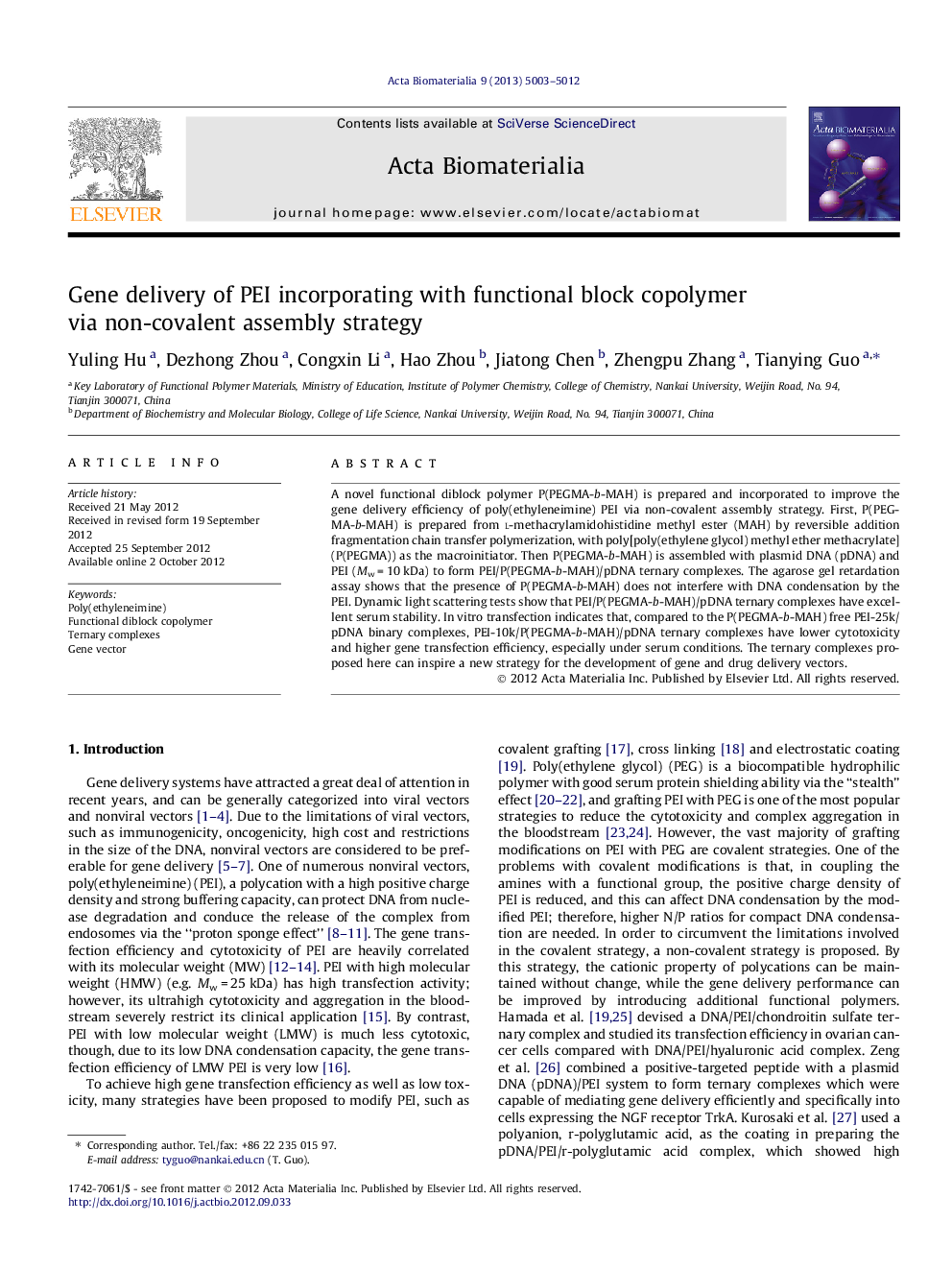| کد مقاله | کد نشریه | سال انتشار | مقاله انگلیسی | نسخه تمام متن |
|---|---|---|---|---|
| 823 | 67 | 2013 | 10 صفحه PDF | دانلود رایگان |

A novel functional diblock polymer P(PEGMA-b-MAH) is prepared and incorporated to improve the gene delivery efficiency of poly(ethyleneimine) PEI via non-covalent assembly strategy. First, P(PEGMA-b-MAH) is prepared from l-methacrylamidohistidine methyl ester (MAH) by reversible addition fragmentation chain transfer polymerization, with poly[poly(ethylene glycol) methyl ether methacrylate] (P(PEGMA)) as the macroinitiator. Then P(PEGMA-b-MAH) is assembled with plasmid DNA (pDNA) and PEI (Mw = 10 kDa) to form PEI/P(PEGMA-b-MAH)/pDNA ternary complexes. The agarose gel retardation assay shows that the presence of P(PEGMA-b-MAH) does not interfere with DNA condensation by the PEI. Dynamic light scattering tests show that PEI/P(PEGMA-b-MAH)/pDNA ternary complexes have excellent serum stability. In vitro transfection indicates that, compared to the P(PEGMA-b-MAH) free PEI-25k/pDNA binary complexes, PEI-10k/P(PEGMA-b-MAH)/pDNA ternary complexes have lower cytotoxicity and higher gene transfection efficiency, especially under serum conditions. The ternary complexes proposed here can inspire a new strategy for the development of gene and drug delivery vectors.
P(PEGMA-b–MAH) is assembled with pDNA and PEI-10k to form PEI/(PEGMA-b–MAH)/pDNA ternary complexes with desirable stability and high transfection efficiency.Figure optionsDownload high-quality image (107 K)Download as PowerPoint slide
Journal: Acta Biomaterialia - Volume 9, Issue 2, February 2013, Pages 5003–5012